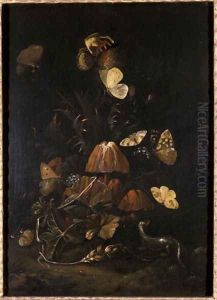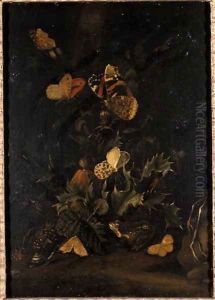Johann Christian Thomas Winck Paintings
Johann Christian Thomas Winck, born in 1738 in the city of Augsburg, Germany, was a figure whose contributions to the art world, particularly in sculpture and plasterwork, remain noteworthy even centuries after his time. Winck’s artistic journey began in his hometown, a place known for its rich cultural and artistic heritage. This environment undoubtedly nurtured his early interest and eventual career in the arts. During the 18th century, the art scene in Germany was vibrant, with various influences flowing from Italy and France, which also impacted Winck's development as an artist.
Winck was primarily recognized for his work in sculpture and stuccowork, mediums through which he expressed both the Rococo and early Neoclassical styles, reflecting the transition in European art tastes during his lifetime. His ability to blend the ornate and intricate details characteristic of Rococo with the emerging clarity and simplicity of Neoclassicism allowed him to create works that were both timely and timeless. This duality not only showcased his versatility as an artist but also positioned him as a bridge between two important eras in art history.
Throughout his career, Johann Christian Thomas Winck undertook several significant projects, many of which involved elaborate stuccowork in religious and secular buildings. His works are characterized by their detailed craftsmanship and the dynamic interplay of light and shadow, a testament to his mastery of the medium. Winck's sculptures, often imbued with a sense of grace and fluidity, further attest to his skill and artistic vision.
Despite his considerable talent and contributions to the art world, Winck's name is not as widely recognized as some of his contemporaries. The reasons for this oversight are varied, ranging from the transient nature of fame to the specific challenges of preserving and attributing plasterwork and stucco decorations. However, in academic circles and among art historians, his work is still studied and appreciated for its aesthetic value and historical significance.
Johann Christian Thomas Winck passed away in 1797, leaving behind a legacy that, while not as celebrated in the mainstream art world, continues to be acknowledged and revered by those who delve deeper into the nuances of 18th-century European art. His contributions help us understand the complexities of this period's artistic transitions and the individual talents who helped shape its evolving landscape.

